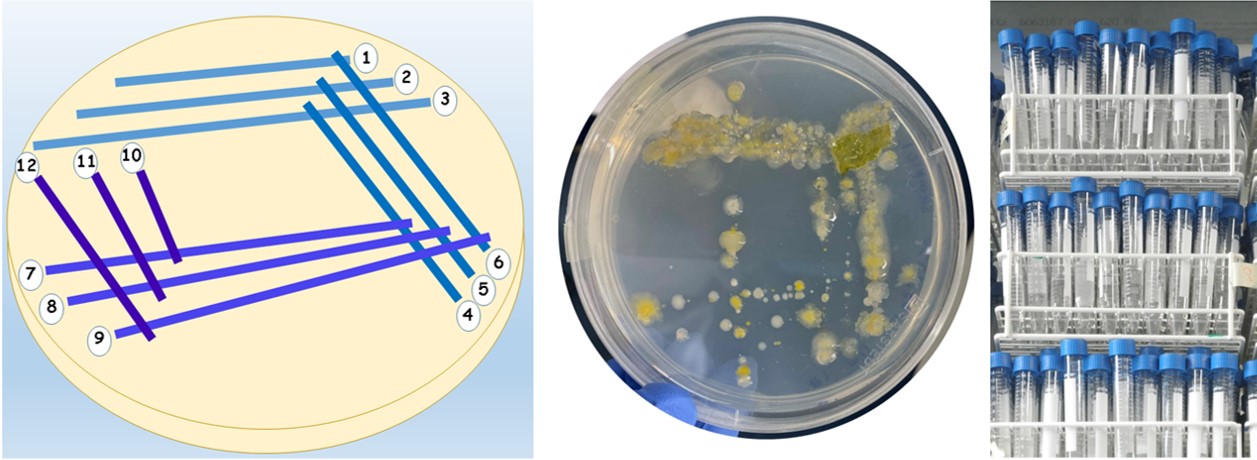- Departments
- Department of Molecular Ecology
- Molecular Ecology
- Isolation and cultivation of Microorganisms
Isolation and cultivation of Microorganisms
Isolation and cultivation of microorganisms
The diversity of microbial species is nearly endless. Currently the use of standard media in a high throughput approach will always yield strains representing novel species and genera. This is not the focus of our cultivation program.
The cultivation-independent genomic analyses of habitats provide us with a realistic view on the abundant microorganisms in the sea. For candidates of a global importance in the carbon cycle, we use molecular tools – strain-specific PCRs and in situ hybridizations – to quantify the presence in enrichment cultures. Novelty arises often from a change in methods. Microbiologists have used nutrient-rich single-fed batch cultures to isolate bacteria for over hundred years, targeting the fastest growing organisms. This happens very rarely in nature. And the abundant bacteria in the sea apparently do not like these rich media. We dilute the cells with sterile seawater directly after sampling to isolate individual cells and incubate for long times to get slowly growing bacteria. The combination of physical isolation into hundreds of cultures, sufficient time to grow and molecular tools to analyze enrichment cultures still needs the perfect medium for the microorganism of interest. A perfect medium provides all nutrients at non-toxic concentrations, ideally in a permanent continuous-fed mode at micromolar concentration, like in nature.
A continuous-fed mode for hundreds of cultures can only be realized in exceptional cases. One solution to this problem is the downscaling of our expectations. Clear water can contain one million of cells per ml, and exactly this growth, to the naked eye invisible, is the best strategy to obtain and cultivate many of the abundant bacteria from the sea. Once the strains have grown in media with environmental nutrient concentrations, selective pressure towards growth at higher cell concentrations can be applied and visibly turbid cultures can eventually be obtained.
The ocean is not a broth, the nutrient content is low. But in the ocean there are in the water column many local, dynamic and often nutrient-rich habitats for microorganisms: the surface of algae and zooplankton, the digestive systems of zooplankton and fishes, the particles formed by the sea and zooplanktonic fecal pellets, cell aggregates and diffusive boundary layers around nutrient releasing algae and other particles. The isolation of microorganisms from these habitats is one of the great challenges in microbial oceanography.
